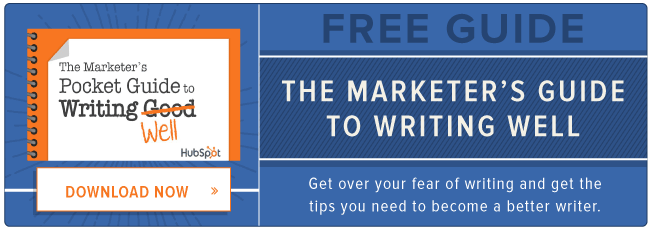
07 Dec Nothing is Original: Why the Most Talented People Copy (And Why That’s OK)
[ad_1]

This post originally appeared on Agency Post. To read more content like this, subscribe to Agency Post.
We have an insatiable thirst for the new.
In business, we want new products, new campaigns, and new ways of reaching consumers.
The shiny object syndrome isn’t just about being easily distracted. It’s also the result of thinking that what is new — and seemingly unique — is better.
So how can we meet the increasing demands to come up with new ideas under shorter deadlines?
Mark Earls believes we need to get better at copying — badly.
“Copying lies at the heart of creativity,” writes Earls in Copy, Copy, Copy: How to Do Smarter Marketing by Using Other People’s Ideas, which was released earlier this year.
Why Copying Makes Us Uncomfortable
Earls’ background is in planning — previously at St Luke’s and as the executive planning director for the EMEA division at Ogilvy & Mather in London. He also has published three other books, including Herd: How to Change Mass Behaviour by Harnessing Our True Nature and I’ll Have What She’s Having: Mapping Social Behavior. These previously published books deal more with insights on how people are social beings and how that relates to consumer behavior. Copy, Copy, Copy is the playbook for applying those insights to come up with new ideas, which is based on copying the success of others.
But this idea of copying is uncomfortable for many people — especially those in agencies whose value to clients lies in the ideas it produces.
He writes:
Our culture has a very strong individualist strand: we prize the individual over the group and distrust those who don’t have a strong sense of authentic self, who don’t ‘know their own mind’, ‘self-actualize’, ‘sing their own song’ or whatever metaphor is popular down the dark self-help aisle in the bookstore.
We pride ourselves on the uniqueness of our ideas, our thoughts, and our expressions. So the thought of saying that we copied someone else’s ideas would mean that we are not smart enough or creative enough or inventive enough to develop our own ideas.
We worship originality, but actually, copying is an innate human skill — one we need for survival. We copy to learn, to understand, and to gain social status by mimicking others.
And this focus on individualism is mostly a product of North American and European cultures.
“We’re the unusual ones,” Earls said. “We’re the ones that think almost everything in human behavior is going to be explained by individuals and what goes on between and individual and peers. Everyone else seems to think human beings are, first and foremost, social creatures, and that much of what shapes human behavior is between them, not in between their ears.”
In the book he points to the idea of Ubuntu, a South African philosophy, that is described as: “which sees man as a fundamentally social being, rather than a ‘host of individual entities that cannot help being in constant conflict.’”
While many marketers think of consumers as concerned about “me,” much of the world thinks in terms of “we.” And this is often how people actually make decisions.
“Without people copying each other, things don’t spread very fast or very far,” Earls said. “It’s human-see, human-do.”
Why You Should Copy — Badly
There are two types of copying. The first is replication or machine-like copying.
Copying with the intention to “exploit the intellectual and financial effort involved in making something new and better” is how copying gets a bad rap, writes Earls.
The second type is human copying, which Earls says naturally creates error — this is the kind of copying you need to master.
The point is to copy badly (or loosely), to copy with the point of including variations or to fix known problems. You can also copy from “far away” — studying other industries and applying these to your own.
Earls mentions an example of this “from a distance” copying: In the early 1800s, Joseph Marie Jacquard invented the Jacquard loom, which used laced together wooden punch cards to simplify the creation of complex textile designs. This system made it possible to created highly detailed, intricate weaving patterns quickly and accurately. This machine is inspired early computer technology that used punch cards to control data processing.
How to Copy to Create Better Ideas Faster
Copy, Copy, Copy isn’t about using someone else’s idea as the foundation of a new idea. And it certainly doesn’t condone copy cat advertising or blatant plagiarism.
Instead, Earls provides a pattern book, a term originally used in architecture, for copying previously used and successful strategies.
“We live in an agile age,” Earls said. “We’ve got to move faster than we’ve ever done before. Traditional strategy and creative strategy thinking isn’t yet equipped to do that. I found myself bemused by why it would take 6 months to come up with a fairly original and vague idea. That’s not good enough anymore. We have to work much harder.”
Here are three examples from Copy, Copy, Copy to show how copying an approach to problem solving can lead to unique insights for a brand problem:
“Dramatically Over-Engineer Better: This is one of the signature trends in modern marketing: 20 years ago, SUVs were a minority working vehicle, now few school runs are without vehicles capable of competing in and completing the Paris-Dakar Rally. The same is true of the wristwatch business – while the elegantly simple and the cheap and simple are still around, the explosion of diving or aviator watches worth thousands of dollars (often worth more than a car) is remarkable. Indeed, the over-engineering of leisure clothing is legion – from sportswear to expeditionary equipment. These ‘extreme’ outdoor clothing brands are popular at a local North London bus stop: North Face, Annapurna and Patagonia. Being good enough to climb mountains in or wade mighty rivers in makes them ideal for any challenges you might encounter on the 29 bus (or even the 253).”
“Promote an Unusual and Irrelevant Feature: The mainstream beer market has been prone to this for some time. In the US, there was a phase when the nature Appalachian water used to brew with was a point of difference. In the UK, we had ‘widgets’ in cans to recreate the qualities of draught beer.”
“Make Packaging a Badge of Identity: Few packaging designs have real social identity. Coke’s classic bottle shape is an exception. As Martin Lindstrom points out, it is unmistakeable, even when broken and denotes both product qualities and authenticity but more importantly the shared identity of Coke drinkers Gateway computers used Friesian-patterned boxes to signal a different kind of computer was being delivered to a different kind of user – someone who clearly knows what’s what. Department stores like Selfridges and Bloomingdales have both created highly visible (and expensive) bags in order to use the fashion-set as walking endorsements of their brands.”
He also suggests drawing as a way to come up with ideas or to reveal connections.
People — especially those in our industry — tend to rely on jargon and what he calls “verbal fireworks.” Drawing forces us to be precise and to show the steps and connections in a real way.
He writes:
Time and again in our work we come back to the truth of this – to the importance of drawing as a mode of thinking, rather than a complement to it, or an afterthought. Drawing and thinking are closely related. Indeed, in many important ways, it’s worth assuming drawing IS thinking.
In addition, these strategy frameworks and the mapping tool he provides make it possible for anyone on a team to be involved in ideation. You don’t need a psychology degree or an understanding of neuroscience.
“I think that anything that excludes the talent we’ve got in the room from making contributions should be stopped,” Earls said. “This approach seems to bring into the strategy that player who’s not normally been allowed a voice.”
Copy the Starting Problem for More Creative Results
Copying has long been the go-to tool for the most innovative and creative people — from scientists to athletes to artists to musicians.
Most problems are like other problems, which means most solutions requires similar approaches. It’s the errors, the small variations, made by the hands of a person newly approaching the issue, that makes anything truly unique.
As Earls’ writes, “It’s what we learn from each other — what we copy — that allows us to create new things.
[ad_2]
Source link
Social Media Agency, Social Media, Digital Marketing, Digital Marketing Agency, Search Engine Marketing, SEO, digital marketing agency dubai, video content marketing, crossfit marketing dubai, video marketing dubai, digital marketing agency abu dhabi, facebook marketing dubai, facebook marketing abu dhabi, digital marketing agencies in dubai, social media agency, content marketing dubai, content strategy dubai, branding dubai


